
On October 11th, Erica Crawford, founder (with her husband Kim Crawford) of the Marlborough, New Zealand-based Loveblock winery, debuted the Loveblock Sauvignon Blanc TEE to a select group of wine media at Hunt and Fish Club in New York City.
The single-vineyard, organic and vegan Loveblock Sauvignon Blanc TEE was produced using green tea tannin extract instead of sulfites as a preservative. Erica recognized that green tea (camellia sinensis) is rich in antioxidants, and after experimenting with the antioxidative effects of the tannins that were extracted from green tea (a permitted wine additive (Ti Premium® SG)) on wine, she discovered that these tannins can be employed in winemaking to guard against oxidation and spoilage. Green tea tannin extract is a natural antioxidant and therefore, possibly a purer alternative to sulfites.
A total of 5mg/l of green tea extract tannins were added at harvest, and during the crush, float, and post-fermentation racking, as well as filtration and bottling stages. As a result, the wine contains only a 15-25mg/l (threshold permitted) minimum of sulfites that were naturally produced during the fermentation process. The name “TEE” represents both the green “tea” tannin extract used in the winemaking process, as well as the Afrikaans word for tea (a reflection of Erica’s South African roots).
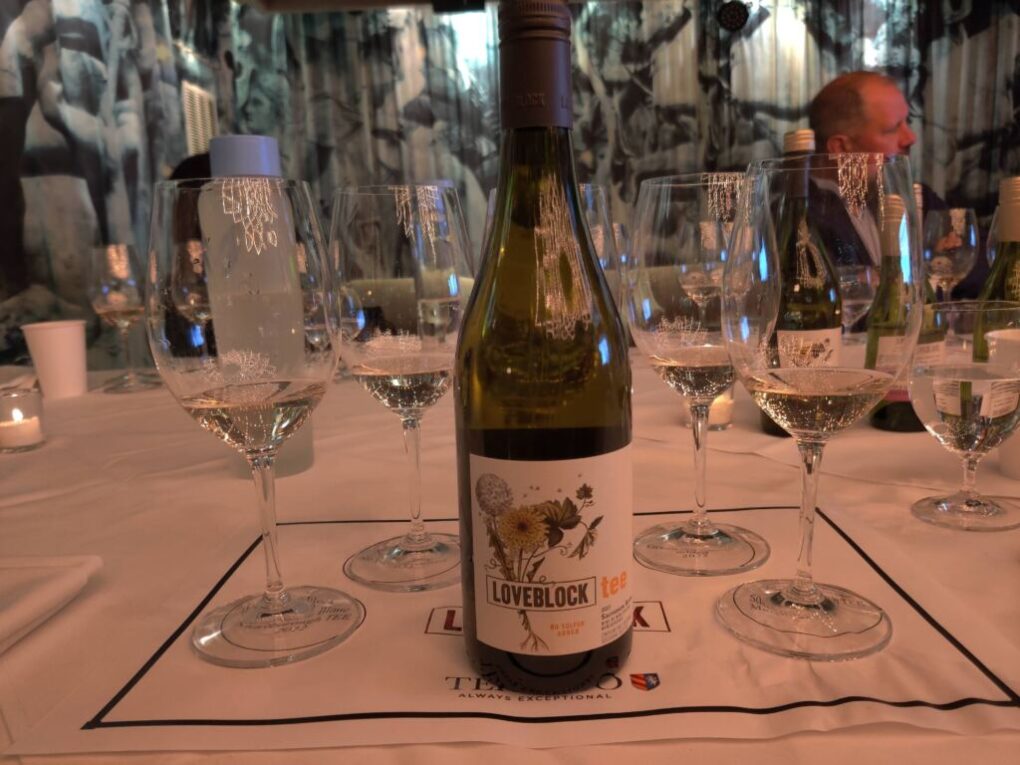
The Loveblock Sauvignon Blanc TEE is believed to be the first wine crafted using this method of preservation, and it represents a potentially important advancement in the field of oenology. It is currently the only wine in the Loveblock portfolio that is produced using green tea tannin extract.
Erica is no stranger to oenological innovation. Since establishing Loveblock winery in 2006, she and Kim have focused on continuously researching and applying the latest and most effective organic and biodynamic winemaking principles in the crafting of all of their wines. The winery employs a holistic approach to winemaking that prioritizes the health of the land and the ecosystem. Their commitment to sustainable viticulture has not only set them apart in the industry but has also contributed to the growing global movement toward environmentally friendly winemaking practices.
The result is a fine portfolio of environmentally sustainable and organic wines crafted from Sauvignon Blanc, Pinot Gris, and Pinot Noir, among other varietals that showcase the distinct terroir of the Awatere Valley in Marlborough and reflect Erica and Kim’s unique and progressive approach to winemaking. All wines are produced using organic methods of winemaking, and (with the exception of the Loveblock Sauvignon Blanc TEE that is produced using green tea tannin extract), contain a maximum of 50-60mg/l of sulfur (approximately 50-60% less than the 160mg/l of sulfites that are normally found in other New Zealand wines).
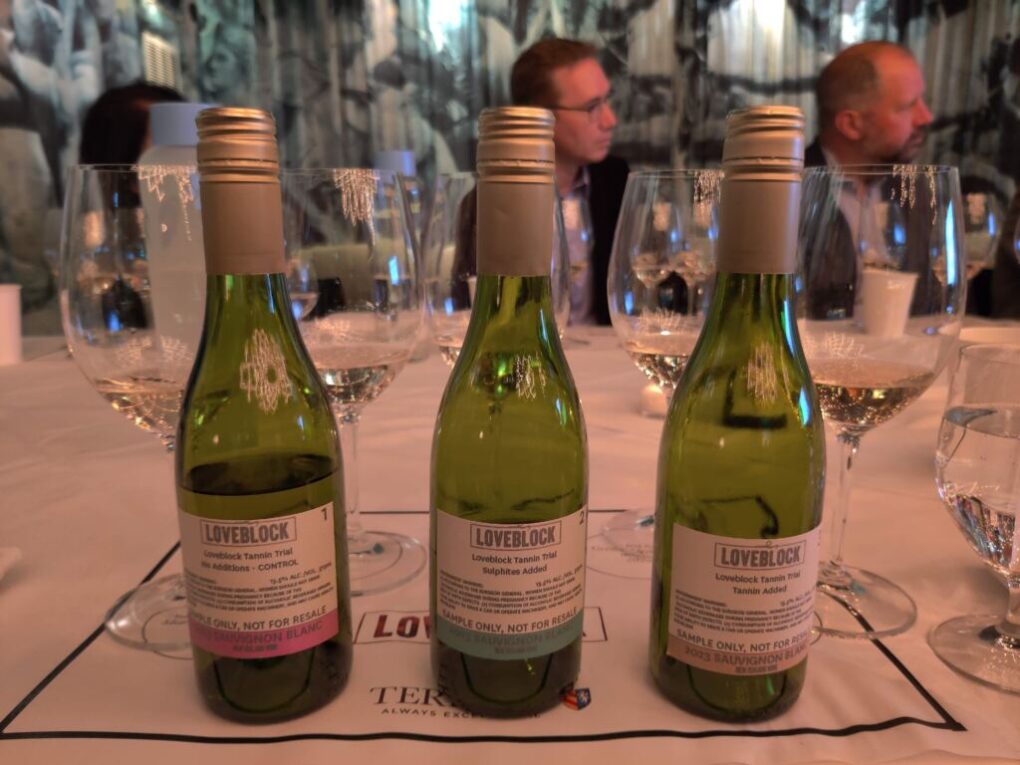
We tasted a Loveblock Sauvignon Blanc, TEE 2022 and Loveblock Sauvignon Blanc, TEE 2021 alongside a Sauvignon Blanc treated with sulfur, and an untreated Sauvignon Blanc.
There were subtle differences between the Loveblock Sauvignon Blanc TEE, 2022 and the Loveblock Sauvignon Blanc TEE, 2021 but overall, both were elegant and supple, and had a balanced salinity, aromas of ripe citrus, orchard, and tropical fruit, as well as fresh spice, and lively notes of mandarin, starfruit, and pineapple, as well as basil, saffron, and cumin.
The Loveblock Sauvignon Blanc, 2022 (treated with sulfur), was crisp and well-balanced, with aromas of white flowers, summer and orchard fruit, and herbs, and notes of peaches, pineapples, and honey, as well as sage, and fresh grass.
Meanwhile, the untreated Sauvignon Blanc continuously evolved in the glass as it came in contact with the outside air. Its citrus fruit beginnings quickly gave way to green apple, and then even quince and honey notes, demonstrating the substantial effects that oxygen has on the different characteristics of wine.
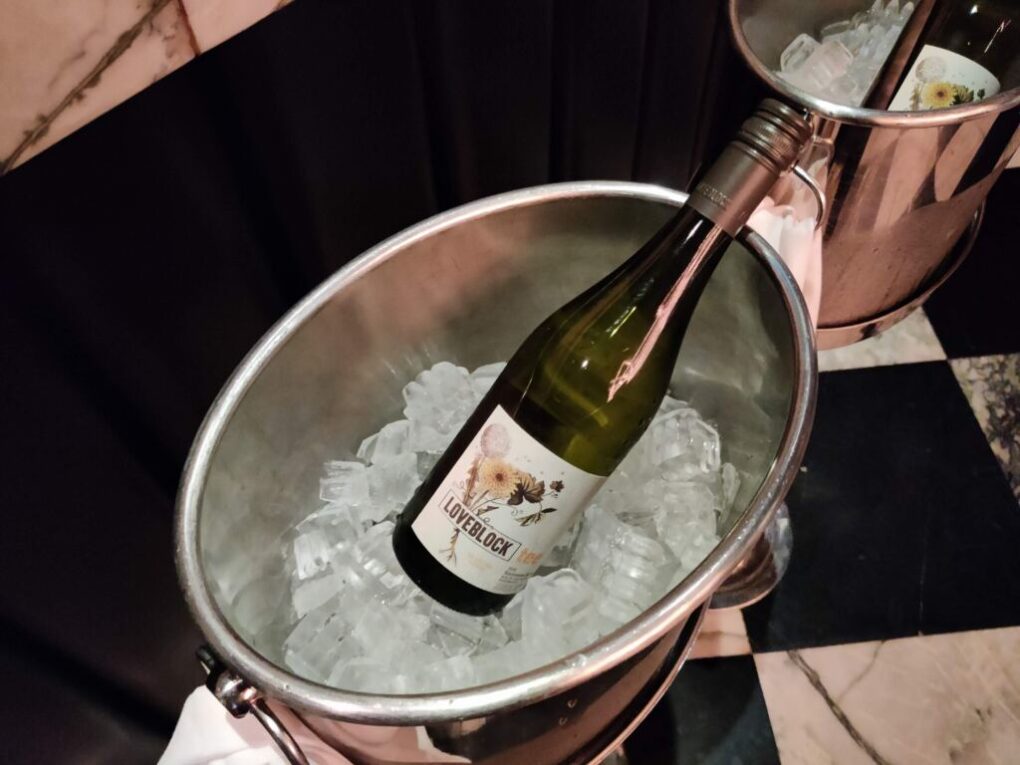
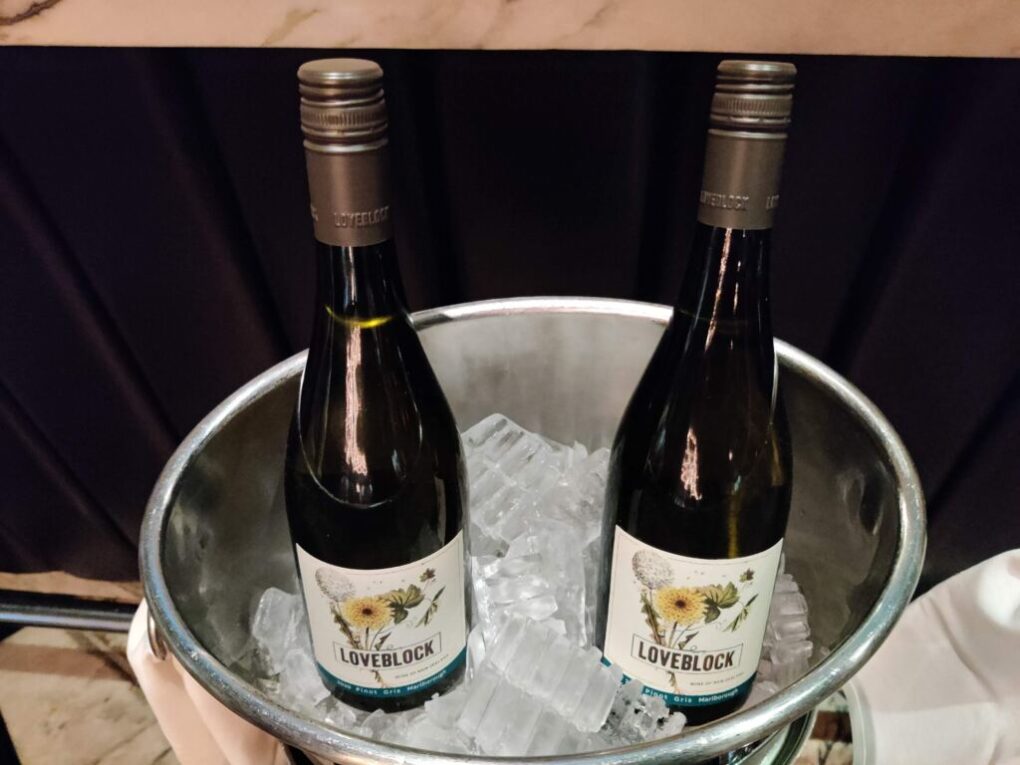
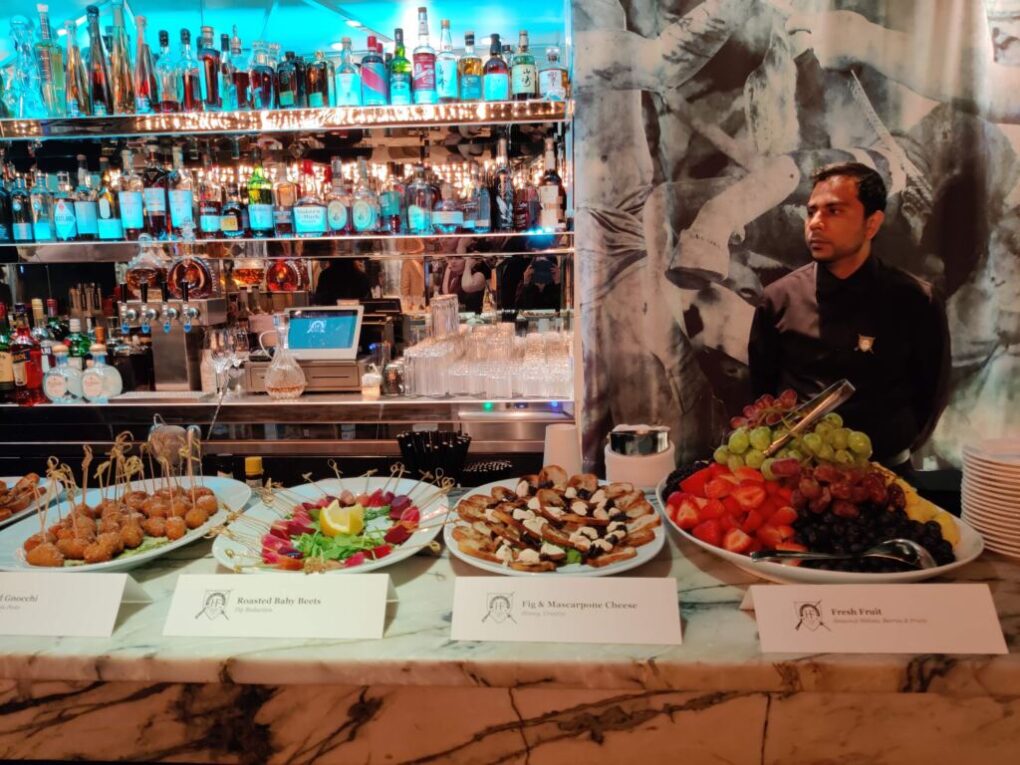

An eclectic collection of small bites ranging from crabcakes and baby beets, to smoked salmon and fried gnocchi, paired well with the assortment of Sauvignon Blanc, as well as a Pinot Gris, and Pinot Noir that were poured at lunch.

Be First to Comment